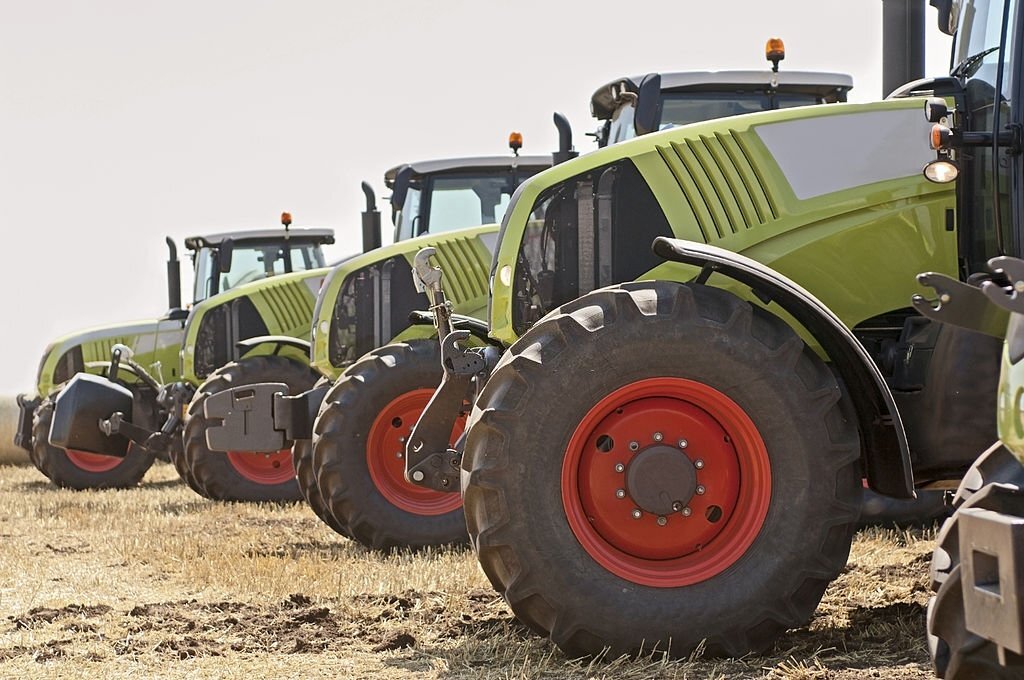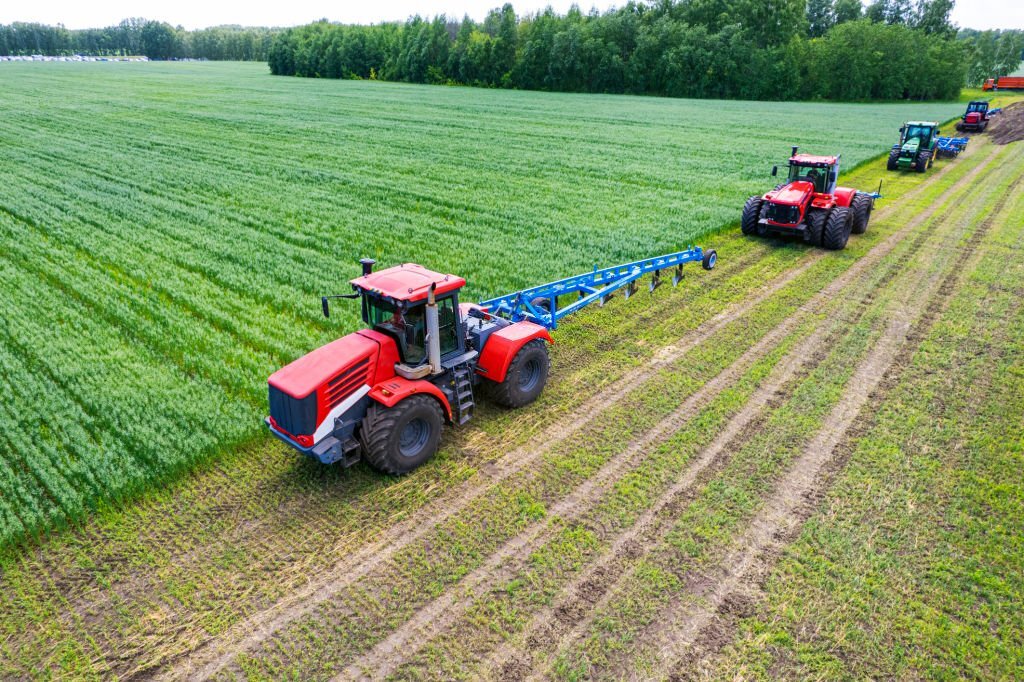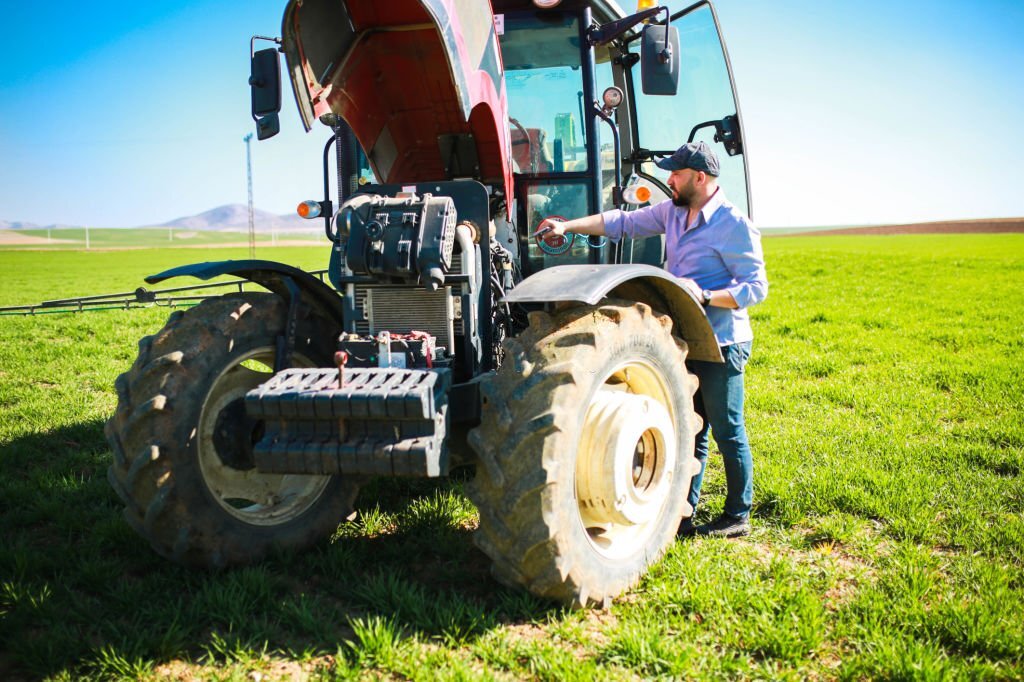
Tractors are versatile workhorses that have revolutionized heavy equipment operations in agriculture, construction, and various other industries. Their ability to perform a wide range of tasks makes them indispensable in many applications. However, like any piece of machinery, tractors come with their own set of disadvantages and limitations. In this article, we’ll delve into some of these challenges to provide a comprehensive view of using tractors in heavy equipment operations.
Limited Speed and Mobility:
Tractors are not known for their high-speed capabilities. While they excel at low-speed, heavy-duty tasks, they may not be suitable for applications that require rapid movement, such as road transportation. Their limited mobility can be a drawback in certain scenarios.

Pros and Cons of Tractor Limited Speed and Mobility
Tractors’ limited speed and mobility are inherent characteristics that come with their design and functionality. While these limitations can be restrictive in some situations, they also offer certain advantages in specific applications. Let’s explore the pros and cons of tractors’ limited speed and mobility:
Pros:
Enhanced Safety:
- Pro: Tractors’ slower speeds contribute to safer operations, especially in congested work environments. Their reduced speed allows operators more time to react to obstacles and unexpected situations, minimizing the risk of accidents.
Precision Control:
- Pro: Tractors’ slower pace enables precise control over various tasks. In agriculture, for example, slow speeds are essential for accurate planting, fertilizing, and spraying, ensuring uniform crop coverage and optimal yields.
Reduced Environmental Impact:
- Pro: Tractors’ lower speeds generally result in reduced fuel consumption and emissions. This makes them more environmentally friendly and aligns with sustainability goals, particularly in agriculture and construction.
Minimized Soil Compaction:>
- Pro: Slower tractors exert less pressure on the ground, reducing soil compaction. This is especially important in agriculture, where soil health and structure are critical for crop growth.
Versatility:
- Pro: Tractors’ versatility allows them to be used in various applications. Their ability to perform multiple tasks at slower speeds makes them valuable assets for tasks that require precision and control.
Cons:
Reduced Efficiency in Transportation:
- Con: Tractors’ slow speeds can be a significant drawback when transporting equipment or materials over long distances. Their limited mobility on public roads necessitates additional time and resources for transportation.
Longer Travel Times:
- Con: The slow travel speed of tractors can extend the time required to move between job sites or fields. This may impact overall project schedules, especially in construction and agriculture.
Restricted Access to Some Work Sites:
- Con: Tractors’ size and limited maneuverability can limit their access to certain work sites, particularly those with tight spaces or challenging terrain. This can hinder their usability in specific applications.
Incompatibility with Time-Critical Tasks:
- Con: Tractors may not be suitable for time-critical tasks or those that require rapid response, such as emergency road repairs or situations where immediate action is necessary.
Impacts on Traffic Flow:
- Con: Tractors traveling on public roads at slow speeds can disrupt traffic flow and lead to congestion. This can be a concern in areas with heavy traffic or during peak commuting hours.
Need for Additional Transportation:
- Con: Due to their limited road speed, tractors often require transportation on trailers or trucks between work sites. This adds logistical complexity and costs to projects.
Size and Maneuverability:

The size of tractors, especially larger models, can be a limitation when working in confined spaces or on narrow pathways. Maneuvering them can be challenging, and their size may restrict access to certain job sites.
Tractor Size:
Impact on Task Capability: Tractor size directly affects its power, capacity, and capabilities. Larger tractors typically have more powerful engines and can handle heavier loads or implement larger attachments. This makes them well-suited for heavy-duty tasks like plowing large fields in agriculture or moving substantial materials in construction.
Versatility: Tractors come in various sizes, from compact models to large, industrial-grade machines. The choice of tractor size should align with the specific needs of the task. Compact tractors are ideal for tasks in tight spaces or small-scale operations, while larger tractors excel in more extensive applications.
Accessibility: The size of a tractor can impact its ability to access certain work sites. Smaller tractors are better suited for navigating through narrow pathways, orchards, or confined spaces, making them valuable in landscaping or small-scale agriculture.
Transportation Considerations: When moving tractors between job sites or transporting them on public roads, size becomes a critical factor. Larger tractors may require specialized trailers and permits for transportation, which can add logistical complexities and costs.
Tractor Maneuverability:
Navigating Tight Spaces: Maneuverability is essential when operating tractors in confined areas. Tractors with excellent maneuverability can make sharp turns and negotiate tight corners, which is crucial in orchards, vineyards, or construction sites with limited space.
Terrain Adaptability: Different terrains require varying levels of maneuverability. Tractors used in construction, forestry, or landscaping may encounter uneven or challenging terrain. Models with good maneuverability can handle such conditions more effectively.
Worksite Productivity: Tractor maneuverability contributes to overall worksite productivity. Efficient maneuvering allows operators to position the tractor precisely for tasks like grading, digging, or material handling, reducing the need for rework and improving efficiency.
Operator Comfort and Safety: Easy maneuverability enhances operator comfort and safety. Operators can maintain better control of the tractor, reducing the risk of accidents or damage to property due to difficult or awkward maneuvering.
Turn Radius: The tractor’s turning radius is a critical factor in maneuverability. Tractors with smaller turning radii can make tighter turns, which is beneficial in tasks requiring precise positioning or navigating confined areas.
Specialized Tasks:

Tractors are versatile, but they may not be the best choice for highly specialized tasks that require specialized equipment. For instance, tasks involving delicate precision or extremely heavy loads might necessitate dedicated machinery.
Tractors are highly versatile machines capable of performing a wide range of tasks in various industries, but there are specialized tasks and applications where they excel due to their adaptability, power, and efficiency. Here are some specialized tasks for tractors:
- Plowing and Tillage: Tractors are commonly used in agriculture for plowing fields and performing tillage operations. They can break up and turn over soil efficiently, preparing it for planting crops.
- Seeding and Planting: Tractors equipped with specialized seeders and planters are essential for precisely sowing seeds and planting crops at the correct depth and spacing in agriculture.
- Fertilizer Application: Tractors can be fitted with fertilizer spreaders and sprayers to apply fertilizers and pesticides with accuracy, ensuring even distribution across fields.
- Harvesting: Some tractors are adapted for harvesting tasks, such as pulling combine harvesters or operating specialized fruit and vegetable harvesting equipment.
- Orchard and Vineyard Work: Compact tractors are commonly used in orchards and vineyards for tasks like pruning, spraying, and harvesting due to their maneuverability in tight spaces.
- Mowing and Lawn Care: Lawn tractors and garden tractors are designed for mowing lawns and maintaining large yards and gardens. They can be equipped with various attachments for tasks like mulching, aerating, and dethatching.
- Snow Removal: Tractors can be fitted with snow blowers, plows, or blades for efficient snow removal on roads, driveways, and parking lots during winter months.
- Trenching and Excavation: Tractors with backhoe attachments are used for digging trenches, excavating foundations, and performing utility work in construction and landscaping.
- Land Grading: Tractors equipped with grading blades or box scrapers are employed to level and shape land surfaces, creating a smooth and even terrain for construction or landscaping projects.
- Material Handling: Tractors can handle various material handling tasks, such as loading and unloading pallets, moving hay bales on farms, or transporting construction materials on job sites.
Fuel Consumption:

While efforts have been made to improve fuel efficiency in tractors, their engines can still be relatively fuel-hungry compared to smaller, more specialized equipment. This can lead to higher operating costs in terms of fuel consumption.
Tractor fuel consumption is a critical consideration for operators and businesses, as it directly impacts operating costs and environmental sustainability. The fuel efficiency of a tractor depends on various factors, including the tractor’s design, engine type, load, operating conditions, and maintenance practices. Here’s an overview of tractor fuel consumption and ways to manage it effectively:
Factors Affecting Tractor Fuel Consumption:
- Engine Type: The type of engine in the tractor significantly influences fuel consumption. Modern tractors are often equipped with diesel engines known for their fuel efficiency and torque, although some tractors use alternative fuels or even electric power.
- Engine Size and Power: Larger and more powerful engines tend to consume more fuel. Selecting a tractor with an appropriately sized engine for the intended tasks can help optimize fuel efficiency.
- Load and Attachments: Tractor fuel consumption increases when towing heavy loads or using power-hungry attachments. Properly matching the tractor’s power to the load can minimize unnecessary fuel consumption.
- Operating Speed: Tractors are most fuel-efficient at specific operating speeds. Running a tractor below or above its optimal speed range can lead to increased fuel consumption. Manufacturers often provide guidelines for ideal operating speeds.
- Terrain and Conditions: Tractor fuel consumption can vary significantly based on the terrain and environmental conditions. Rough or hilly terrain, muddy fields, and extreme weather conditions may require more fuel to complete tasks.
Initial Cost:
The initial purchase price of tractors, especially those equipped with advanced features and technology, can be relatively high. This upfront cost can be a deterrent for smaller businesses with limited budgets.

The initial cost of a tractor is a significant consideration for businesses and individuals looking to purchase this versatile heavy equipment. The price of a tractor can vary widely depending on several factors, including the tractor’s size, brand, features, and intended use. Here’s a closer look at tractor initial costs and some of the factors that influence them:
Factors Affecting Tractor Initial Cost:
- Tractor Size and Power: One of the most influential factors in determining a tractor’s cost is its size and power. Larger and more powerful tractors typically come with higher price tags due to the increased engine capacity, capabilities, and manufacturing costs.
- Brand and Model: The brand and specific model of the tractor play a significant role in pricing. Established brands with reputations for quality and reliability often command higher prices. Premium models with advanced features also tend to cost more.
- Attachments and Implements: Tractor prices can vary depending on the attachments and implements included or available as options. Some tractors come with a range of factory-installed attachments, while others may require additional investment in implements for specific tasks.
- Engine Type: The type of engine (e.g., diesel, gasoline, electric) can impact the initial cost. Diesel engines are commonly used in tractors for their power and efficiency, but they may come with a higher upfront cost than gasoline-powered models.
- Hydraulic Systems: Tractors equipped with advanced hydraulic systems for controlling attachments and implements may be more expensive due to the added complexity and functionality.
- Transmission Type: The type of transmission, such as manual or automatic, can affect pricing. Some tractors offer options for different transmission types, allowing buyers to choose based on their preferences and budget.
- Features and Technology: Tractors with advanced technology features, such as GPS guidance, auto-steering, and telematics, often cost more. These technologies can enhance productivity and efficiency but may add to the initial investment.
- Cab and Comfort Features: Tractors with enclosed cabs, climate control, and ergonomic seating tend to be more expensive than open-platform models. These features can enhance operator comfort and safety.
- Tire and Wheel Options: Tractor tire types and wheel configurations can impact cost. Specialty tires or dual-wheel setups may come at an additional expense.
- Dealer Location and Support: Dealer pricing can vary by location, and dealers may offer different packages, financing options, or incentives that affect the overall cost.
Additional Considerations:
- Used vs. New: Buyers can often find used tractors at a lower initial cost than new ones. However, the condition, age, and maintenance history of a used tractor should be carefully assessed.
- Total Cost of Ownership: While the initial cost is a significant consideration, it’s essential to evaluate the total cost of ownership over the tractor’s lifespan, including fuel, maintenance, repairs, and depreciation.
- Financing: Many buyers choose to finance their tractor purchase, spreading the cost over time through loans or leasing arrangements. Financing options can affect the initial outlay and monthly payments.
- Resale Value: Some tractors retain their value better than others, which can impact the long-term cost of ownership. Resale value should be considered when evaluating initial costs.
In conclusion, while tractors offer a multitude of benefits in heavy equipment operations, they also have their share of disadvantages and limitations. Understanding these drawbacks is essential to make informed decisions about when and how to use tractors in various applications. By carefully considering the specific needs of a project and weighing the pros and cons, businesses and operators can maximize the benefits of tractors while mitigating their limitations for successful heavy equipment operations.

